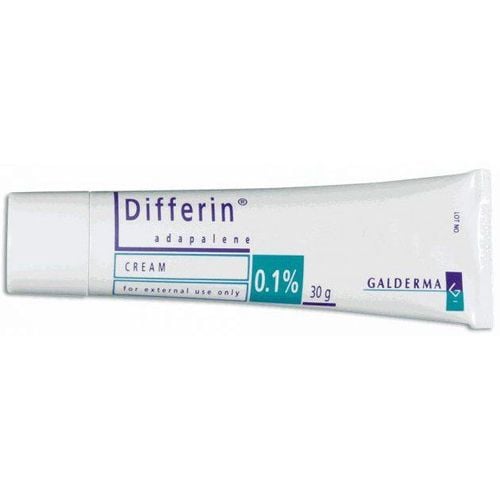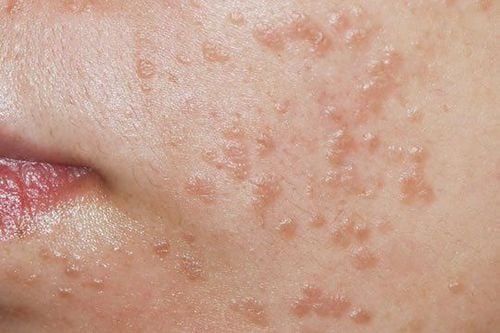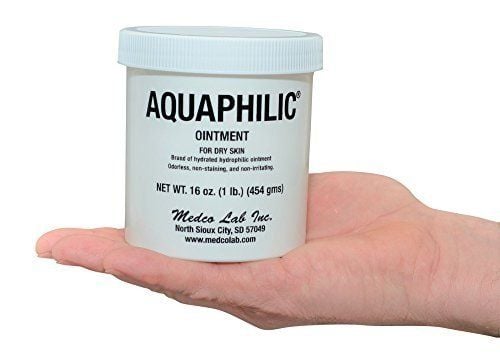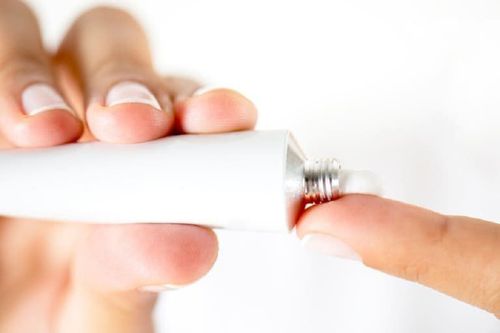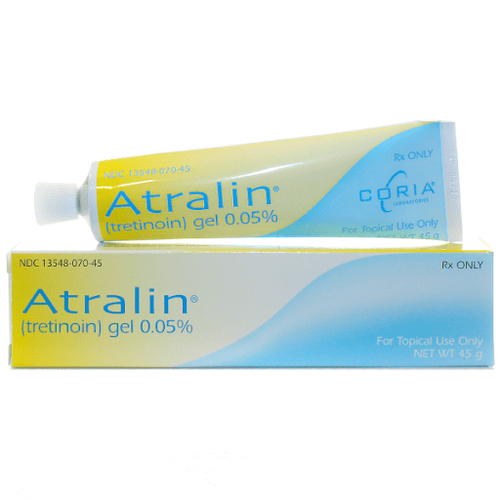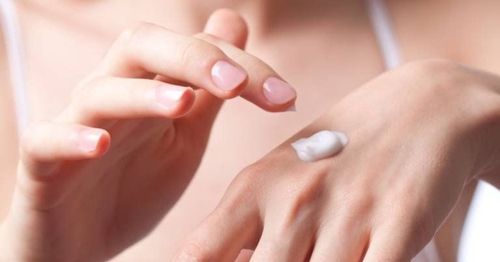This is an automatically translated article.
Akurza topical is available in many different forms, such as gels, ointments, patches or lotions. This drug is often indicated for use in the treatment of skin disorders such as papules, calluses, acne, etc. During the use of Akurza topical, patients should strictly adhere to the following recommendations. your doctor's instructions to make sure the medication is safe and effective.
1. What is Akurza topical?
Akurza topical, also known as salicylic acid, is commonly used in the form of a topical cream to help treat a number of skin disorders such as dry skin, acne, scaly skin, psoriasis. common seborrheic dermatitis, calluses, nodules or warts. In addition, the drug is also used to remove dead skin on the palms, feet and warts.
According to research, Akurza topical belongs to the group of aspirin (salicylate) drugs, not recommended for use in children under 2 years of age. Because Akurza topical is prescribed for a variety of uses, it's important to consult your doctor for more detailed information.
2. How to use Akurza topical
The main active ingredient in Akurza topical is salicylic acid, which should only be used on the skin, absolutely do not eat or get into the eyes, nose or mouth. In the process of using the drug, the patient should follow the doctor's instructions, avoid taking more or apply the drug for a longer time than recommended, unless necessary. Compliance with the dose and duration of drug treatment will help patients minimize the risk of absorbing salicylic acid through the skin and leading to poisoning.In case the active ingredient salicylic acid gets into the nose, eyes or mouth, the patient should quickly rinse with water within 15 minutes. Avoid applying Akurza topical to areas of skin that are experiencing swelling, redness, burning pain, irritation or infection.
Before the first treatment with Akurza, the patient should test a small amount of the drug on the small damaged skin for 3 days. If there is no reaction or discomfort, you can safely use the medicine as recommended by your doctor.
How to use Akurza topical cream, ointment or lotion For Akurza topical ointment, cream or lotion, the patient should only apply enough medicine to the affected skin area and gently massage to help the active ingredients penetrate evenly into the skin. .
How to use Akurza topical gel Before applying Akurza topical gel for salicylic acid, the patient should apply a wet towel to the affected skin area for at least 5 minutes. Then, proceed to apply a sufficient amount of gel to the skin to be treated and gently massage.
How to use Akurza topical patches for nodules, calluses and warts Akurza topical patches should be used as directed by your doctor, avoiding use on irritated, red, or infected skin. In addition, the patch should not be used by patients with diabetes or poor blood circulation.
Do not use the patch on hairy warts or warts on the surface and inside of the genitals, nose or mouth. On the other hand, Akurza topical patches are also not recommended for use on birthmarks or moles because of the potential for severe irritation.
Before using Akurza topical patch, you need to wash and dry the area to be treated:
For the treatment of warts, the patient should soak the wart in warm water for about 5 minutes before using the medicine. Akurza topical should be used at bedtime and left on for at least 8 hours. Reapply every 48 hours for best results. For calluses, you should reapply every 48 hours as needed and for up to 14 days or as directed by your doctor until completely removed. Patients can soak calluses in warm water for about 5 minutes to remove them more effectively. How to use Akurza topical topical Wipe the area to be treated and apply a thin layer of medicine at the affected area. Do not wash off the medicine after applying it.
3. Dosage of Akurza topical
Dosage of Akurza topical will depend on different patient populations. It is important that patients follow the doctor's recommendations as well as the instructions in the prescription. In addition, the dose of the drug that you use is also determined based on the strength of the drug and the medical condition.
3.1 Dosage of Akurza topical cream For children over 2 years of age and adults: Use 2 - 10% cream as needed, or 25 - 60% once for 3 - 5 days. Do not use akurza topical in children under 2 years of age. 3.2 Dosage of Akurza topical gel Dosage for acne treatment: Children over 2 years old and adults: Use gel from 0.5 - 5% / day / time. Dosage for treatment of psoriasis: Children and adults: Use topical akurza gel 5% / day / time. Usual wart treatment dosage: Children over 2 years old and adults use gel 5 - 26% / time / day. 3.3 Dosage of Akurza topical lotion Treatment of acne: Children over 2 years old and adults apply topical akurza lotion from 1-2% about 1-3 times / day. Treatment of dandruff and seborrheic dermatitis of the scalp: Children over 2 years old and adults use from 1.8 - 2% akurza topical lotion 1-2 times / day. 3.4 Dosage of Akurza topical ointment Treatment of acne: Children over 2 years of age and adults should use akurza topical ointment from 3 to 6% as needed. Treatment of seborrheic dermatitis and psoriasis: Children over 2 years of age and adults use 3 - 10% topical akurza ointment as needed. Treatment of common warts: Children over 2 years old and adults apply ointment from 3 to 10% as needed. Can be used from 25 - 60% once every 3-5 days. 3.5 Dosage of akurza topical patch for acne treatment in adults and children > 2 years from 1 to 3 times a day. The use of akurza topical is not recommended for children under 2 years of age.
4. Some notes when using Akurza topical medicine
During the use of Akurza topical, the patient should not use any of the following preparations on the affected skin without the advice of a doctor, including:
Soaps, strong detergents. Products containing alcohol. Any other topical acne preparation containing exfoliants such as sulfur, benzoyl peroxide, resorcinol, or tretinoin. Cosmetics or soaps that cause dry skin. Other topical medications. The application of any of the above preparations to the same damaged skin may cause severe skin irritation. On the other hand, Akurza topical can cause salicylate toxicity, especially in children and people with liver or kidney disease. Patients should notify their doctor immediately if they have symptoms such as nausea, vomiting, hearing loss, dizziness, increased breathing, lethargy, ringing in the ears, mental confusion or diarrhea.
In addition, the drug can also cause rare, even life-threatening allergic reactions. When noticing symptoms such as itching, rash, swelling of the eyes/lips/face/tongue, difficulty breathing, sore throat or fainting, the patient should be taken to a medical facility soon for care and support. aid. Also, avoid using the medicine again if you have had a severe allergic reaction after taking it.
5. Some side effects may occur after taking Akurza topical
During the use of Akurza, patients may experience some unwanted side effects below:
Skin irritation. Feeling lightheaded or dizzy. Headache. Extreme fatigue or weakness. Shortness of breath, tinnitus, hearing loss. Rash, itching, redness, peeling skin. Drowsiness, abdominal pain or vomiting. Diarrhea.
6. Instructions for storing Akurza topical
Akurza topical should be stored in an airtight container at room temperature, away from moisture, heat and direct light. Do not store medicines in the freezer compartment and keep them out of the reach of children. Do not store expired or no longer valid drugs. If you want to destroy the medicine, you need to consult your doctor for the correct disposal.
Above is important information about Akurza topical. Read the instructions carefully before use will bring better results for the patient.
Please dial HOTLINE for more information or register for an appointment HERE. Download MyVinmec app to make appointments faster and to manage your bookings easily.
Reference source: holevn.org - drugs.com



